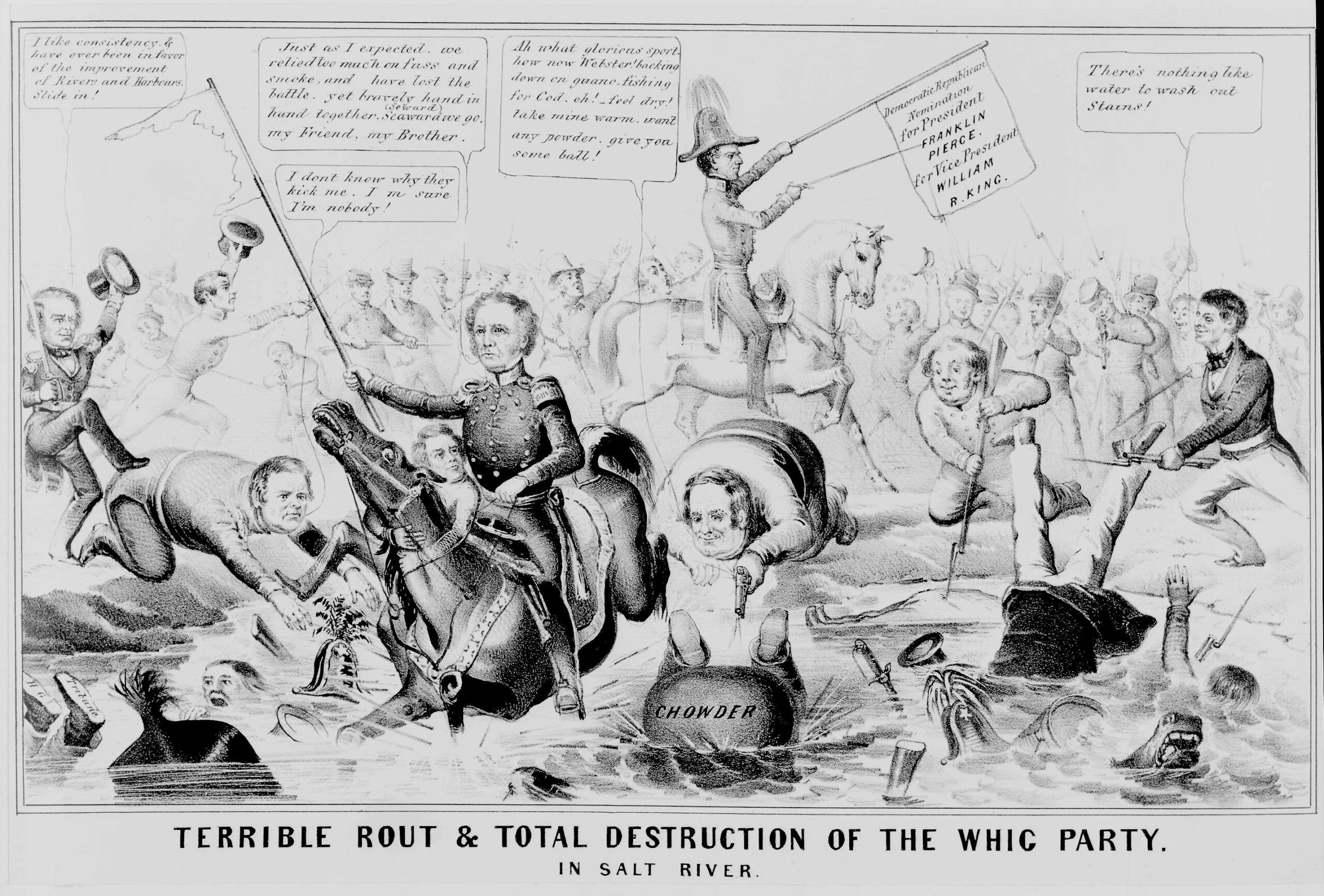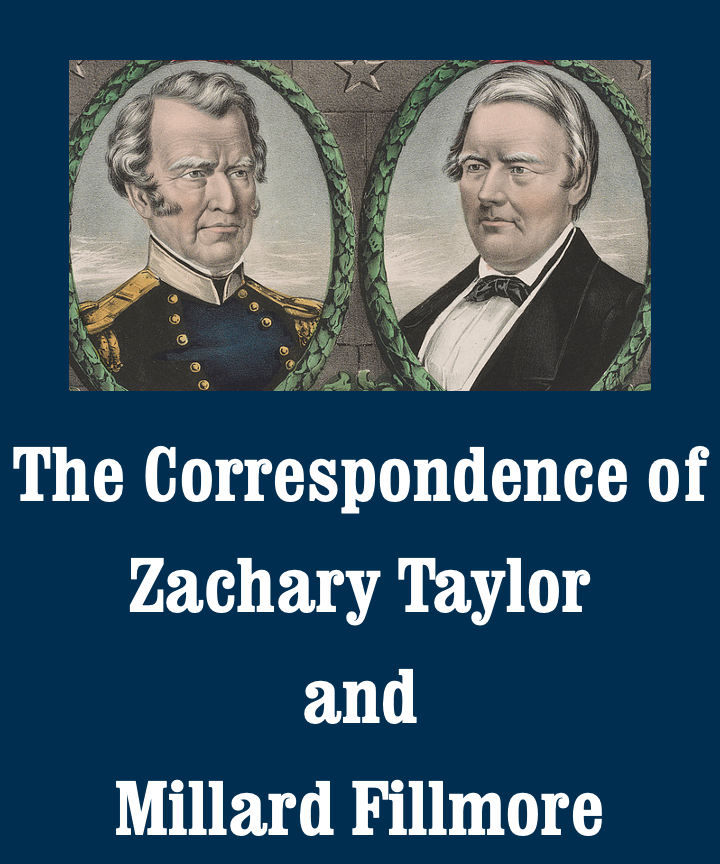Click above to listen to this article, read by Kate E. Hutchinson.
Sometimes the world surprises even us historians. Less than two weeks have passed since my last blog entry, and I didn’t intend to return so soon. But recent news makes this seem the right time to share events from the 1840s and 1850s that will sound familiar today.
Two stories in presidential politics have dominated the headlines this month. First, a would-be assassin shot Donald Trump. The former president and Republican nominee, thank goodness, survived, but one supporter was killed, and two others were severely injured. Second, amid questions about Joe Biden’s age and capability, some Democrats have called for the incumbent president’s replacement as their presumptive nominee. Yesterday, President Biden announced his withdrawal from the race and endorsed Vice President Kamala Harris.
Neither Zachary Taylor nor Millard Fillmore, to our best knowledge, was the target of an assassination attempt. Some have speculated that Taylor’s death while president, usually attributed to gastrointestinal illness, resulted instead from murder by arsenic poisoning. But neither documentary nor chemical evidence—the latter obtained when his body was exhumed in 1991—supports that hypothesis.
Taylor and Fillmore did, however, live in an age when some presidents voluntarily served only one term. From 1888 until yesterday, every president who completed a first term sought and won his party’s nomination for a second. Not so before then. In the decade our project studies, not just one, and not just two, but three first-term presidents chose not to seek a second. Two of them did so despite significant support from constituents. John Tyler in 1844, James K. Polk in 1848, and Fillmore in 1852 either prevented or declined their parties’ nods for four more years.
In 1844, Tyler had little chance of victory. Previously a Democrat, he had been elected vice president as a Whig in 1840. When President William Henry Harrison died after one month in office, Tyler succeeded him. Never having supported many policies popular with Whigs, he made decisions as president that led to their officially expelling him from the party and left him with little support anywhere. In 1844 he launched a third-party candidacy under the so-cleverly named “Tyler Party.” In August, however, facing the reality that he could not win and the satisfaction that the Democrats had not nominated Martin Van Buren, whom he detested, Tyler ended his campaign. The election came down to the Whig Henry Clay and the Democrat Polk. Polk won.
Four years later came Polk’s chance for reelection. He, however, already had dismissed the idea. Right after his nomination in 1844 by the Democratic National Convention, Polk took his friend Aaron V. Brown’s advice to pledge that he would serve only one term. (Harrison had made such a pledge in 1840, but his death had rendered it a moot point.) In his letter accepting the nomination, Polk announced that, if elected, “At the end of four years I am resolved to retire to private life. In assuming this position I feel that I not only impose on myself a salutary restraint, but that I take the most effective means in my power of enabling the Democratic party to make a free selection of a successor.” (Brown’s May 30 and Polk’s June 12 letters are published here.) In other words, Polk seems to have been motivated by other Democrats’ ambitions for the White House. He would defer those ambitions for only four years, not eight.

This political cartoon of 1848 shows Polk, on the right, being carried away on a stretcher. Library of Congress.
The pledge did not stop supporters from trying to change Polk’s mind. Benjamin Boston, an Indiana Democrat, wrote him on July 7, 1847, “I have heard that you had Declined Being a Candidate for the Presidency. I hope it is not So for the Country Canot Do Without your Services four years Longer and I hope you Will consent to Run a Second time.” Right up until the convention, held in Baltimore in May 1848, some argued that only Polk could unite the party and defeat the Whigs. After some delegates told him that they might nominate him in spite of his wishes, Polk found it necessary to write a letter to the convention on May 20 forswearing his own candidacy and vowing to support the nominee. The convention nominated Lewis Cass, who lost the election to the Whig Taylor.
In 1852, it was Fillmore’s turn. Having been elected vice president in 1848 and succeeded to the presidency after Taylor’s death in 1850, he had time to consider whether to seek a term in his own right. And he took his time. By the end of 1851, he privately had indicated a lack of interest in the Whig nomination and support for the candidacy of Daniel Webster—who, as secretary of state with the vice presidency vacant, was the second most senior member of the administration. But Fillmore did not formally withdraw or otherwise publicly announce his plans. He wrote to his friend Thomas M. Foote on April 27, 1852, laying out his stance: he did not want the nomination, and he would not work to obtain it, but he would not stop others from trying to give it to him. He admitted to Foote that this was “a false position before the public.”
Fillmore’s supporters, neither encouraged nor impeded by him, pursued his nomination. Some described him as the party’s only chance at victory. Fillmore delegates joined those supporting Webster and Winfield Scott (the other lead Mexican-American War general, besides Taylor) at the Whig National Convention in Baltimore in June. There were no primaries in the nineteenth century, so delegates got to make their own decisions about whom to nominate.
Just before the convention began, Fillmore finally issued his decision—sort of. He sent a letter to the convention, via delegation leader George R. Babcock, announcing his withdrawal. But Babcock ignored the letter and pursued the nomination anyway. (The Babcock correspondence is in the Free Library of Philadelphia’s Presidential Letters collection). So the delegates voted . . . and voted . . . and voted. They voted fifty-three times.

This political cartoon of 1852 shows Fillmore, on the left, being kicked into the river. Library of Congress.
From the start, Fillmore and Webster together had a majority. But neither of those two insider candidates had one alone. For days, neither publicly announced his withdrawal in the other’s favor. Then, without consulting each other, each notified the convention simultaneously that he was withdrawing. Their conflicting telegrams merely confused the delegates. Even Fillmore and Webster afterwards wrote to each other expressing uncertainty about how the convention would react (but not proposing any clarification). In the end, absent any coordination between those two, a few delegates from each camp switched to Scott and gave that outsider the nomination. He lost the election to the Democrat Franklin Pierce.
Thus Tyler, Polk, and Fillmore—at least in part by choice—became one-term (or less) presidents. After four years out of office, Fillmore did again seek a second term. The Whig Party having collapsed, he won the American (or Know-Nothing) Party’s nomination in 1856. Meanwhile, under different circumstances, a trend continued: in neither 1856 nor 1860 did the incumbent president get his party’s nomination. But that’s another blog.
For more details on these presidential withdrawals, see the Tyler biographies by Oliver Perry Chitwood and Christopher J. Leahy, the Polk ones by Louise A. Mayo and Walter Borneman, and the Fillmore ones listed here.
Finally, we have a social media update! You can now follow us @ZTandMF on both X and Threads. You also can subscribe to this blog, if you’re viewing it on a computer, in the column to the left.
